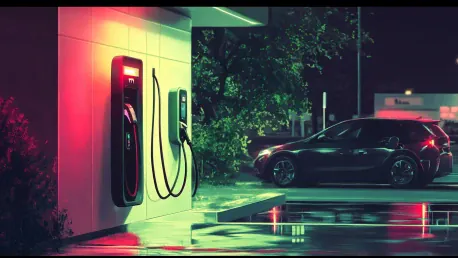Anticipated Changes to the Inflation Reduction Act under Trump’s Administration
As the incoming Trump administration and a Republican-controlled Congress take charge, significant changes to the landmark 2022 Inflation Reduction Act (IRA) are expected. Although a full repeal of the IRA—a major climate and infrastructure law—seems unlikely, selective modifications are anticipated by 2025. The focus of these changes could initially target the law’s electric vehicle subsidies, which have been perceived as expensive and unpopular among Republicans. This development raises questions around the future of energy efficiency incentives as well.
Potential IRA Modifications and Their Impacts
Focus on Electric Vehicle Subsidies
One of the most notable aspects of the anticipated modifications to the IRA lies in electric vehicle subsidies. The subsidies, which were designed to promote cleaner transportation options and reduce carbon emissions, have faced significant scrutiny from Republicans. During the 2024 campaign, President-elect Trump criticized the IRA, branding it as the “Green New Scam” and vowed to rescind unspent funds linked to electric vehicles and offshore wind power projects. Despite this rhetoric, the final implementation of these promises remains uncertain.
The implications of these modifications are extensive, particularly for the clean energy sector. Experts highlighted during a Crux-hosted webinar that clean energy ventures might still harness existing IRA tax incentives through the IRS’s “safe harbor” provision. This provision allows projects with at least 5% of their costs already incurred to qualify under current law, which could provide a buffer against sudden policy shifts. However, the broader landscape of incentives for electric vehicles remains a contentious issue, with potential changes affecting the strategies of manufacturers and consumers alike.
Energy Efficiency Incentives and Bipartisan Support
In addition to revisiting electric vehicle subsidies, the Trump administration may also target energy efficiency incentives embedded within the IRA. These incentives, designed to promote reduced energy consumption and advances in green technologies, have proven generally popular across the political spectrum. Nonetheless, experts like Jennifer Acuña from KPMG noted that maintaining the 2017 tax law might involve significant reductions to these provisions, even those enjoying bipartisan backing.
During the Crux webinar, Acuña emphasized that alterations could include eliminating the IRA’s tax credit transferability and elective pay provisions. Such changes would preserve certain tax credits but aim to curtail associated costs. This strategic move could be necessary to balance the preservation of popular tax credits against the fiscal pressures stemming from extending the 2017 tax law.
The trade-offs inherent in these decisions underscore the complexity of maintaining support for clean energy while adhering to fiscal constraints. The discussion surrounding energy efficiency incentives reflects a broader conversation about supporting sustainable practices within a framework of practical governance and budgetary responsibility.
Broader Economic and Market Impacts
Import Tariffs and Clean Energy Costs
Another critical aspect of the anticipated changes involves Trump’s campaign pledge to impose higher tariffs on imports, including a steep 60% tariff on Chinese products. This policy shift is poised to significantly impact the costs of on-site battery energy storage systems, as a significant portion of U.S. battery imports originates from China. However, it’s worth noting that recent declines in battery material prices might alleviate some of these cost pressures.
The potential increase in tariffs poses a considerable challenge to the clean energy market, particularly for those heavily reliant on imported components. Nevertheless, various states maintain supportive policies that continue to foster sustainable investments. For instance, California’s NEM 3.0 initiative remains a robust incentive for renewable energy projects despite federal policy uncertainties. This state-level support is a crucial counterbalance that may offset some of the adverse effects from increased tariffs.
Growth in Domestic Production
The transitions in federal policies have spurred conversations around the growth of domestic production within the clean energy sector. According to Mike Hall, CEO of Anza Renewables, property owners and managers could soon have access to a broader range of tariff-free, domestically-produced options for clean energy equipment. The IRA has already catalyzed a significant increase in U.S.-made solar cells and modules, creating a promising outlook for sustained domestic growth despite anticipated administrative changes.
This trend toward increasing domestic production reflects broader market dynamics where investment in clean energy remains viable. Manufacturers may find new opportunities within this landscape, aligning with broader economic strategies to enhance self-sufficiency and reduce dependence on foreign imports.
Conclusion
As the Trump administration and a Republican-led Congress take control, significant changes to the 2022 Inflation Reduction Act (IRA) are expected. This landmark law, focusing on climate and infrastructure, is unlikely to be entirely repealed. However, selective modifications are anticipated by 2025. The initial focus of these changes could target the law’s electric vehicle subsidies, which many Republicans view as costly and unpopular. This raises critical questions about the future of energy efficiency incentives and the broader implications for American climate policy.
The IRA’s subsidies for electric vehicles have been a point of contention, particularly among Republican lawmakers who argue that such incentives are a misuse of federal funds and do not align with their broader fiscal goals. Despite these political disagreements, the general aim of the IRA to reduce emissions and support infrastructure development is expected to remain. Yet, the specifics of how these goals will be achieved may undergo significant adjustments. The coming years will reveal how these changes impact America’s efforts to combat climate change and promote sustainable energy practices.









